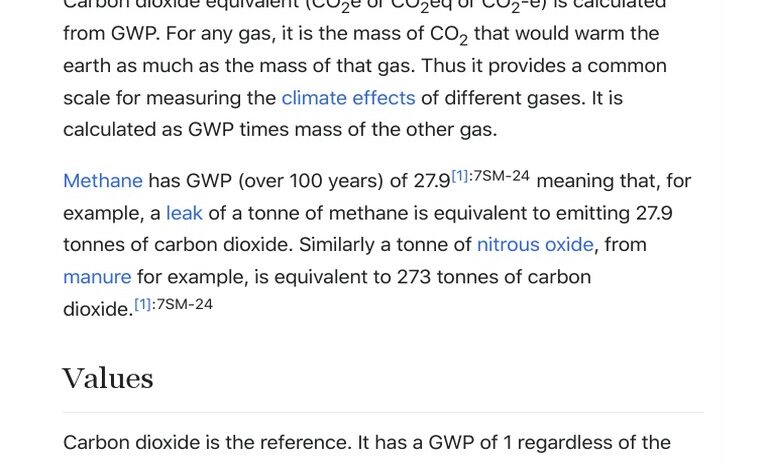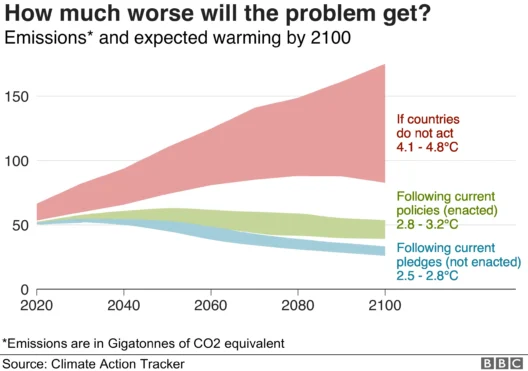In the realm of climate change, understanding the mechanisms driving global warming is imperative. Among the array of greenhouse gases (GHGs) in our atmosphere, each possesses a varying capacity to trap heat. This capacity is quantified in terms of Global Warming Potential (GWP), a metric that allows for comparison between different gases regarding their impact on climate change over a specific time frame, typically 100 years. Within this context, it becomes paramount to identify which gas holds the highest GWP and comprehend its implications for our planet.
To begin, we must define Global Warming Potential itself. GWP is a numerical value that compares the impact of a greenhouse gas to that of carbon dioxide (CO2), which has a GWP of 1. The higher the GWP of a gas, the more heat it can trap in the atmosphere compared to CO2 over the same period. For example, methane (CH4), while significantly less prevalent than CO2, has a GWP of 28-36 over a 100-year period, demonstrating its potency as a greenhouse gas.
However, among all greenhouse gases, sulfur hexafluoride (SF6) emerges as the standout culprit with the highest GWP. With a staggering GWP of 22,800 over a century, SF6 far surpasses other gases in terms of its heat-trapping ability. This unique chemical compound is primarily utilized in electrical transmission and distribution equipment as a dielectric medium due to its excellent insulating properties. Consequently, its presence in the atmosphere—albeit in minuscule quantities—exerts a disproportionately profound impact on global warming.
Aside from SF6, several other prominent greenhouse gases warrant examination. Nitrous oxide (N2O), with a GWP of 298, derives its origins mainly from agricultural practices, including the use of synthetic fertilizers. Its ability to persist in the atmosphere for extended periods amplifies its potential for exacerbating climate change. Furthermore, hydrofluorocarbons (HFCs), with a range of GWPs between 12 and 14,000, are synthetic gases employed predominantly in refrigeration, air conditioning, and aerosol propellants. Their phasedown under international agreements like the Kigali Amendment illustrates concerted global efforts to mitigate climate change.
While contemplating the implications of these high-GWP gases, it is crucial to understand their long-term effects on the climate system. The heat retained by these gases contributes substantially to rising global temperatures, shifting weather patterns, and increasing the intensity and frequency of extreme weather events. As carbon dioxide remains the most ubiquitous greenhouse gas, accounting for the majority of human-induced warming, GHGs with elevated GWPs, such as SF6, represent a critical component of the overall greenhouse gas picture. Even at lower atmospheric concentrations, their profound warming potential necessitates robust mitigation strategies.
Moreover, addressing the emission sources of these gases is integral to any comprehensive climate strategy. The primary pathway for mitigating SF6 emissions involves enhancing regulatory frameworks surrounding its use in the electrical industry. Transitioning toward alternative technologies that utilize less GWP-intensive materials will also be beneficial. For instance, the development of insulating materials that can function effectively without reliance on SF6 needs to be accelerated.
In the agricultural sector, reducing nitrous oxide emissions is feasible through improved nitrogen management and implementing best practices that enhance crop yield without excessive fertilizer application. Such initiatives not only help diminish N2O emissions but also promote sustainable agricultural practices that can bolster food security amid climate challenges.
Furthermore, nations are increasingly engaging in multilateral agreements aimed at reducing the usage of high-GWP gases. The Montreal Protocol initially targeted ozone-depleting substances, but subsequent amendments include provisions for phasing down HFCs, a step that could significantly curtail emissions of some of the world’s highest GWP gases. By fostering international cooperation and leveraging innovative technologies, countries can collaboratively strive towards achieving a more sustainable future.
In conclusion, identifying which gas has the highest Global Warming Potential serves as a crucial reference point in understanding our planet’s climate system. Although carbon dioxide takes the lead in terms of concentration and overall impact, it is imperative to recognize the substantial threat posed by gases like sulfur hexafluoride and nitrous oxide. As climate change accelerates, it becomes ever more critical to employ targeted measures to minimize emissions and embrace sustainable practices that foster resilience against this existential crisis. Our planet’s future hinges on a collective commitment to reducing the influences of these potent greenhouse gases, paving the way for a more stable and sustainable environment for generations to come.







